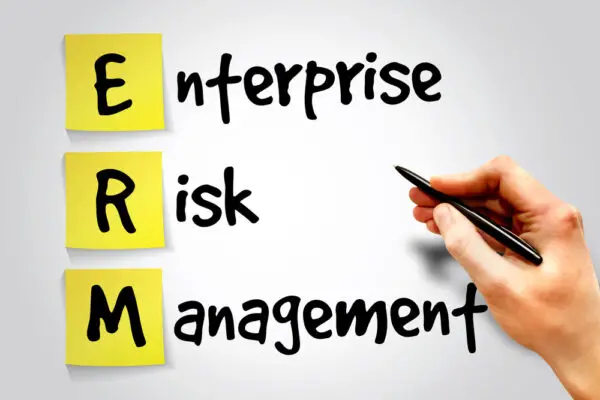Regulatory compliance is a critical aspect of any business operation. Failing to comply with regulations can lead to hefty fines, legal action, and irreparable damage to a company’s reputation.
To avoid these risks, businesses must implement robust risk management strategies that include identifying and monitoring key risk indicators (KRIs).
Mastering regulatory risk indicators is essential for businesses looking to manage their compliance risks proactively.
KRIs are metrics used to identify potential compliance risks, allowing businesses to take corrective action before the risks materialize. This how-to guide provides a comprehensive overview of KRIs in regulatory compliance, offering insights into their role, importance, and implementation.
It covers the steps businesses can take to establish effective KRIs, including understanding their organization, identifying specific areas to monitor risks, and setting up monitoring systems.
Understanding Regulatory Risk Indicators
Regulatory risk indicators are essential tools for businesses to manage potential risks and ensure compliance with industry regulations and standards.
These indicators provide early warning signals that help organizations identify, analyze, and address risks before they escalate into significant issues.
Risk indicators are data points or metrics that organizations use to monitor and assess potential risks that may impact their operations, financial health, or overall performance.
Key risk indicators (KRIs) are a specific type of risk indicator that play a pivotal role in ensuring regulatory compliance. KRIs are used to identify and monitor potential risks to ensure compliance with necessary regulations.
To effectively utilize KRIs, organizations must first identify potential risks and assess their likelihood and potential impact. This allows businesses to prioritize their risk management efforts and develop effective strategies to mitigate potential risks.
Examples of potential risks that businesses may face include financial, operational, reputational, and legal risks. Financial risks may include market fluctuations, credit risk, and liquidity risk.
Operational risks may include system failures, supply chain disruptions, and employee errors. Reputational risks may include negative publicity, customer complaints, and social media backlash.
Legal risks may include regulatory violations, lawsuits, and noncompliance with industry standards.
Businesses can proactively identify critical risks and implement effective strategies to safeguard operations and stakeholders by effectively utilizing key risk indicators (KRIs).

This may include implementing risk management policies and procedures, conducting regular risk assessments, and monitoring key performance indicators (KPIs) to ensure compliance with necessary regulations.
For businesses to comply with industry regulations and standards, understanding regulatory risk indicators is crucial.
Organizations can effectively utilise KRIs to identify and mitigate potential risks, safeguard operations and stakeholders, and ensure long-term success and sustainability.
The Role of Key Risk Indicators in Risk Management
Key Risk Indicators (KRIs) play a crucial role in managing risks and ensuring compliance with regulatory standards. KRIs are specific data points or metrics that organizations use to monitor and assess potential risks that may impact their operations, financial health, or overall performance.
Tracking KRIs enables businesses to mitigate potential compliance risks proactively, adhere to regulatory standards, and safeguard their reputation.
KRIs help organizations to identify potential risks before they escalate into significant issues. By setting risk thresholds, businesses can monitor KRIs and take action when risks exceed acceptable levels.
This proactive risk management approach helps organizations maintain legal and ethical standards and avoid significant losses.
Effective KRIs are tailored to an organization’s unique risk profile and risk appetite. To effectively manage risks, businesses must conduct a comprehensive risk assessment that helps them identify their unique risk landscape.
Based on the outcome of the assessment, Key Risk Indicators (KRIs) can be developed to monitor specific risks. In the case of operational risk management, KRIs can be used to keep track of process efficiency, employee turnover rates, and customer satisfaction.
Risk managers can use KRIs to make informed strategic decisions, prioritize risk mitigation efforts, and maintain financial stability.
Businesses can track KRIs over time to identify trends and patterns for future risk management strategies.
To put it simply, Key Risk Indicators (KRIs) are a powerful resource that organizations can use to manage risks and remain compliant with regulatory standards.
Accurate and customized KRIs help identify and minimize potential risks.
Developing Effective Key Risk Indicators
Developing effective key risk indicators (KRIs) is crucial in ensuring regulatory compliance. KRIs are used to proactively identify and mitigate potential compliance risks, ensuring adherence to regulatory standards and safeguarding an organization’s reputation.
To develop effective KRIs, organizations should follow a structured methodology that includes risk assessment, risk identification, and action plans. The following guidance can help organizations develop effective KRIs:
1. Develop a risk assessment methodology
To develop effective KRIs, organizations should start by developing a risk assessment methodology that includes the identification of key risks and the development of a risk profile.
The risk profile should identify potential risks and appropriate KRIs that can be used to monitor and mitigate those risks.
2. Identify key risks
Organizations should identify key risks by reviewing relevant regulations, industry standards, and internal policies and procedures.
This can be done through a process of risk identification that involves reviewing historical data, conducting interviews, and analyzing relevant documentation.
3. Develop appropriate KRIs
Once key risks have been identified, organizations should develop appropriate KRIs that can be used to monitor and mitigate those risks. KRIs should be specific, measurable, and relevant to the identified risks.
4. Develop action plans
Organizations should develop action plans that outline how KRIs will be used to monitor and mitigate identified risks. Action plans should include specific steps that will be taken if KRIs indicate that a risk is increasing or if a compliance issue is identified.
Organizations can develop effective KRIs to proactively identify and mitigate potential compliance risks, ensuring adherence to regulatory standards and safeguarding their reputation.
Key Performance Indicators Vs Key Risk Indicators
When it comes to risk management, it is essential to understand the difference between key performance indicators (KPIs) and key risk indicators (KRIs). While KPIs are used to measure a company’s performance, KRIs are used to monitor and assess potential risks that may impact the company’s operations, financial health, or overall performance.
KPIs are quantitative and qualitative measures that are used to evaluate the success of a company’s operations. They are used to track progress towards achieving specific goals and objectives.
KPIs are often used to compare a company’s performance against industry benchmarks or competitors. Some common KPIs include revenue growth, profit margins, customer satisfaction, and employee turnover.
On the other hand, KRIs are specific data points or metrics that are used to monitor and assess potential risks that may impact the company’s operations, financial health, or overall performance.
KRIs are used to identify and measure potential risks before they become actual problems. Some common KRIs include market volatility, credit, liquidity, and operational risks.
While KPIs and KRIs are both important tools in business management, they serve different purposes and provide insights into different aspects of business performance.
KPIs help measure business performance, while KRIs help quantify risks. It is important for companies to track both KPIs and KRIs to ensure that they are achieving their objectives while mitigating potential risks.
Benchmarking often compares a company’s performance against industry standards or competitors. It is important to note that benchmarking should be used with caution when it comes to KRIs.
KRIs are often specific to a company’s unique risks and circumstances, and therefore, benchmarking may not always be appropriate.
In business management, KPIs measure performance, while KRIs quantify risks. Companies should track both KPIs and KRIs to ensure that they are achieving their objectives while mitigating potential risks.
Communicating and Reporting Risk Indicators
Once the regulatory risk indicators have been identified and monitored, the next step is to communicate and report them effectively to senior management and stakeholders. This is crucial for ensuring that the organization is aware of the potential risks and can take appropriate actions to mitigate them.
One effective way of communicating regulatory risk indicators is through the use of dashboards. Dashboards provide a visual representation of the risk indicators, making it easier for senior management and stakeholders to understand the risks and make informed decisions.
Dashboards can be customized based on the audience and can include a range of information, such as the current status of the risk indicators, trends over time, and potential impact on the organization.
Another important aspect of communicating regulatory risk indicators is to ensure that the reports are clear and concise.
Reports should include only the most relevant information and avoid technical jargon that may be difficult for non-experts to understand.

Reports should also be customized based on the audience and should provide actionable insights that can help senior management and stakeholders make informed decisions.
It is also important to establish a regular reporting schedule for regulatory risk indicators. This can help ensure that senior management and stakeholders are kept up-to-date on the potential risks and can take appropriate actions in a timely manner.
The reporting schedule should be customized based on the audience and should include regular updates on the status of the risk indicators, any changes in the risk profile, and any actions that have been taken to mitigate the risks.
Communicating and reporting regulatory risk indicators is a critical aspect of effective risk management. By using dashboards, clear and concise reports, and establishing a regular reporting schedule, organizations can ensure that senior management and stakeholders are aware of the potential risks and can take appropriate actions to mitigate them.
Regulatory Risk Indicators in Banks
Regulatory risk indicators are critical in the banking industry, especially in today’s environment, where regulatory oversight is increasing.
Banks need to be aware of their regulatory risks and how to manage them effectively. These risks can include fines, enforcement actions, and new regulations that can impact their operations.
One of the most important regulatory risk indicators for banks is financial stability. Banks need to maintain a stable financial position to ensure they can meet their obligations to customers and investors. This includes having adequate capital, liquidity, and risk management practices in place.
Another important regulatory risk indicator for banks is risk exposure. Banks need to identify and manage their risk exposure effectively to avoid potential losses.
This includes assessing credit, market, and operational risks, as well as monitoring their exposure to counterparty risk.
To effectively manage regulatory risk, banks need to have a robust compliance program in place. This includes having policies and procedures that are designed to ensure compliance with applicable laws and regulations.
Banks also need to have a strong risk management framework in place that is designed to identify, assess, and manage risks effectively.
Regulatory risk indicators are critical for banks to monitor and manage effectively. Maintaining financial stability, managing risk exposure, and complying with laws and regulations are essential for banks to ensure their operations run smoothly.
Regulatory Environment and Compliance
The regulatory environment plays a crucial role in shaping the business landscape. Compliance with regulatory requirements is essential to avoid legal penalties, reputational damage, and financial losses.
In the European Union (EU), regulatory requirements are enforced through a combination of legislation, directives, and regulations.
To ensure compliance, businesses must keep up-to-date with regulatory changes and adapt their processes accordingly. Failure to comply with regulatory requirements can result in fines, legal action, and damage to a company’s reputation.
Mastering regulatory risk indicators is crucial for businesses to identify potential compliance risks and take proactive measures to mitigate them. This involves monitoring key risk indicators (KRIs) that provide insight into the effectiveness of compliance processes.
Common regulatory requirements include data protection, anti-money laundering, and environmental regulations. Compliance with these regulations requires businesses to implement appropriate policies and procedures, such as risk assessments, due diligence, and reporting mechanisms.
To stay ahead of regulatory changes, businesses can leverage technology solutions that provide real-time monitoring of regulatory developments and automate compliance processes.
This can help businesses to reduce compliance costs, improve efficiency, and enhance their ability to manage regulatory risks.
Compliance with regulatory requirements is essential for businesses to avoid legal penalties and reputational damage. Mastering regulatory risk indicators is crucial for identifying potential compliance risks and taking proactive measures to mitigate them.
Businesses can leverage technology solutions to stay ahead of regulatory changes and automate compliance processes.
Utilization of Technology in Managing Regulatory Risks
The use of technology has become increasingly important in managing regulatory risks. With the rise of cyber threats, financial institutions have had to adopt more sophisticated technological solutions to mitigate the risks associated with regulatory compliance.
One way that technology has been used to manage regulatory risks is through the use of regulatory risk indicators (RRIs).
RRIs are quantitative metrics used to measure an institution’s level of compliance with regulatory requirements. They are used to assess an institution’s risk profile and identify areas of potential non-compliance.
Another way that technology has been used to manage regulatory risks is through the use of cybersecurity solutions. Cybersecurity is an essential component of regulatory compliance, and financial institutions must ensure that they have the necessary safeguards in place to protect their data and systems.
To manage cybersecurity risks, financial institutions have implemented a variety of solutions, including firewalls, intrusion detection and prevention systems, and security information and event management (SIEM) systems.
These solutions help institutions detect and respond to cyber threats in real time, minimizing the risk of data breaches and other cybersecurity incidents.
In addition to these solutions, financial institutions have also implemented technology-enabled compliance programs.
These programs use technology to automate compliance processes, reducing the risk of human error and improving efficiency.
For example, institutions may use automated monitoring systems to track transactions and identify potential instances of fraud or money laundering.
The utilization of technology has become essential in managing regulatory risks. Financial institutions must continue to invest in technological solutions to ensure that they remain compliant with regulatory requirements and mitigate the risks associated with non-compliance.

Best Practices in Managing Regulatory Risks
When it comes to managing regulatory risks, there are certain best practices that can help organizations mitigate potential risks and ensure compliance with necessary regulations. These best practices include:
Developing a Comprehensive Risk Profile
Developing a comprehensive risk profile is crucial in identifying potential risks and appropriate key risk indicators (KRIs).
This helps organizations monitor and measure specific parameters that can help in the early detection and prevention of compliance risks.
A risk profile should include information such as the type of risk, the likelihood of the risk occurring, the potential impact of the risk, and the controls in place to mitigate the risk.
Analyzing Exposure Over Time
Analyzing exposure over time is another important best practice in managing regulatory risks. This involves monitoring KRIs to determine whether they are trending up or down over time.
Organizations can mitigate potential compliance risks by analyzing exposure over time and taking proactive measures.
Assigning Risk Owners
Assigning risk owners is another best practice in managing regulatory risks. A risk owner is responsible for monitoring and managing a specific risk.
Organizations can effectively monitor and manage risks by assigning risk owners.
Implementing Early Warning Signs
Implementing early warning signs is another best practice in managing regulatory risks. Early warning signs are indicators that can help organizations detect potential compliance risks before they become a problem. Organizations can prevent risks by implementing early warning signs and taking action.
Making Informed Decisions
Making informed decisions is another important best practice in managing regulatory risks. This involves gathering and analyzing information to make informed decisions about how to manage risks.
Organizations can mitigate compliance risks by making informed decisions.
Organizations can effectively manage regulatory risks by following these best practices to ensure compliance with necessary regulations.
Impact of Regulatory Risks on Business Objectives
Regulatory risks are a critical factor in determining the success of a business. Failure to comply with regulatory requirements can lead to significant consequences, including financial penalties, reputational damage, and legal action.
The potential impact of regulatory risks on business objectives can be severe, affecting strategic goals, profitability, and reputation.
Business objectives are the specific goals that a company sets for itself to achieve. These objectives may include increasing revenue, expanding market share, improving customer satisfaction, or reducing costs.
Regulatory risks can have a significant impact on the achievement of these objectives. For example, failure to comply with environmental regulations may result in fines, which can reduce profitability and increase costs.
Strategic goals are the long-term plans that a company sets to achieve its business objectives. Regulatory risks can impact these goals by limiting the ability of a company to operate in certain markets or restricting the development of new products or services.
Failure to comply with regulatory requirements can also damage a company’s reputation, making it difficult to attract customers or investors.
The potential impact of regulatory risks on profitability is significant. Fines and legal costs associated with regulatory violations can reduce a company’s net income, while reputational damage can lead to declining sales.
In some cases, companies may be forced to suspend operations or cease business altogether due to regulatory non-compliance.
Reputation is an essential aspect of business success. Failure to comply with regulatory requirements can damage a company’s reputation, leading to a loss of customer trust and loyalty. Negative publicity can also make it difficult to attract new customers or investors, which can impact long-term profitability.
Regulatory risks can significantly impact business objectives, including strategic goals, profitability, and reputation. Companies must develop effective strategies to manage regulatory risks to ensure compliance with legal requirements and protect their business interests.
Regulatory Risk Indicators in Health and Funding Sectors
Regulatory compliance is a crucial aspect of business operations in the health and funding sectors. Regulatory risk indicators (KRIs) are essential tools for assessing and managing potential risks in these sectors.
KRIs help organizations to understand and effectively utilize the regulations and standards of the industry to maintain compliance.
In the health sector, KRIs are used to identify and manage risks associated with patient safety, data privacy, and regulatory compliance.
For example, KRIs can be used to monitor the number of patient complaints, data breach incidents, and regulatory violations.
In the funding sector, KRIs are used to identify and manage risks associated with financial stability, data privacy, and regulatory compliance.
For example, KRIs can be used to monitor the number of non-performing loans, incidents of data breaches, and the number of regulatory violations.
Organizations in both sectors can use KRIs to monitor and track trends in regulatory compliance, identify areas of risk, and take corrective actions to mitigate those risks.
Kris can also be used to measure compliance programs’ effectiveness and demonstrate to regulators that the organization is taking a proactive approach to managing regulatory risks.
Regulatory risk indicators play a critical role in the health and funding sectors. Organizations can use KRIs to manage regulatory risks, maintain compliance with industry regulations and demonstrate commitment to safety and stability.

Chris Ekai is a Risk Management expert with over 10 years of experience in the field. He has a Master’s(MSc) degree in Risk Management from University of Portsmouth and is a CPA and Finance professional. He currently works as a Content Manager at Risk Publishing, writing about Enterprise Risk Management, Business Continuity Management and Project Management.

